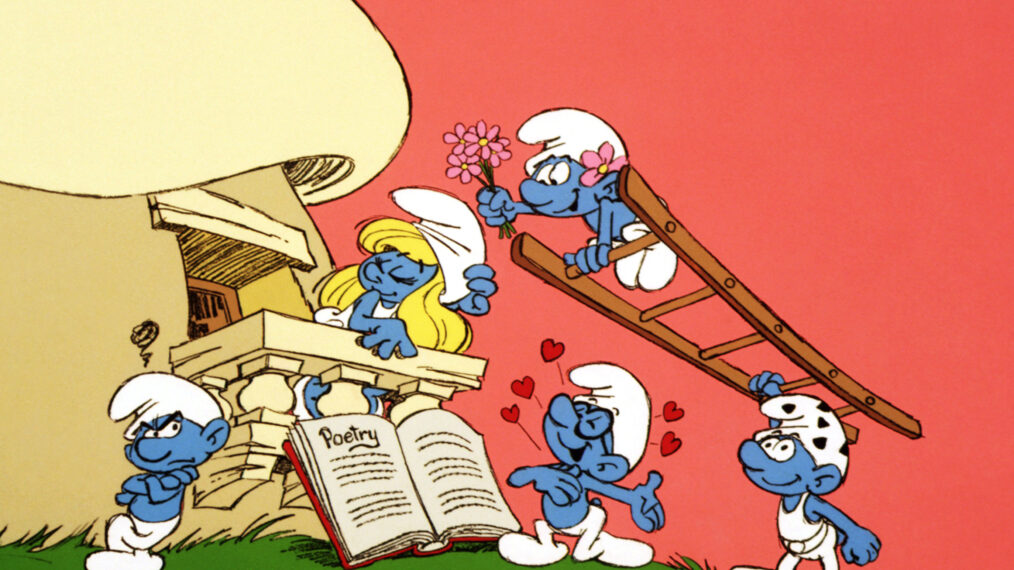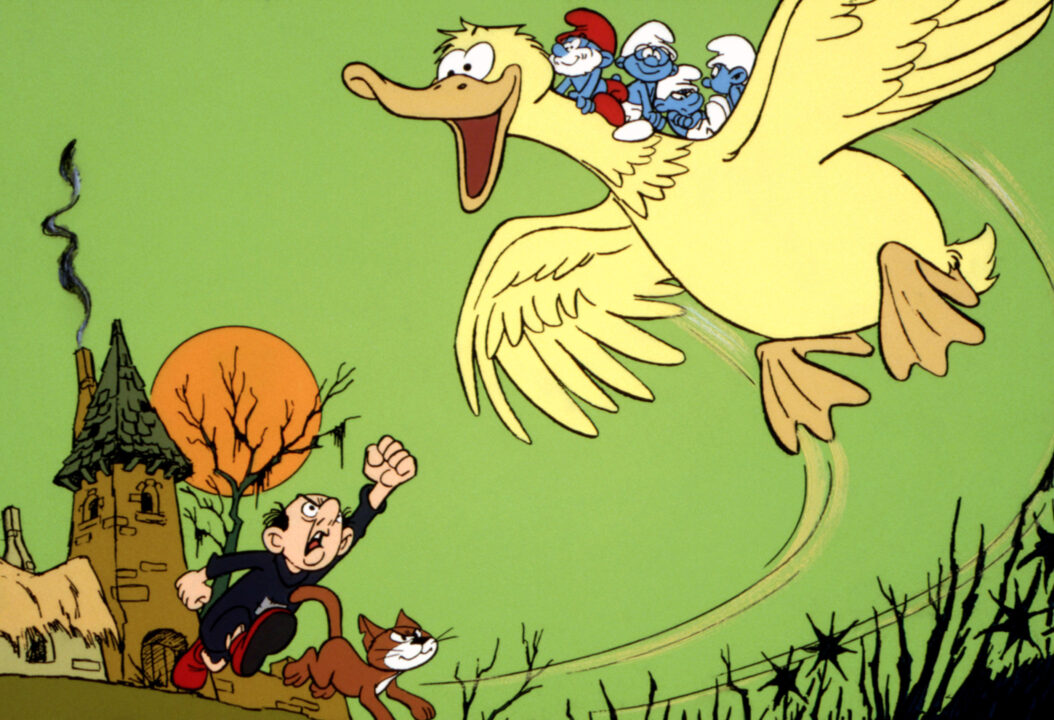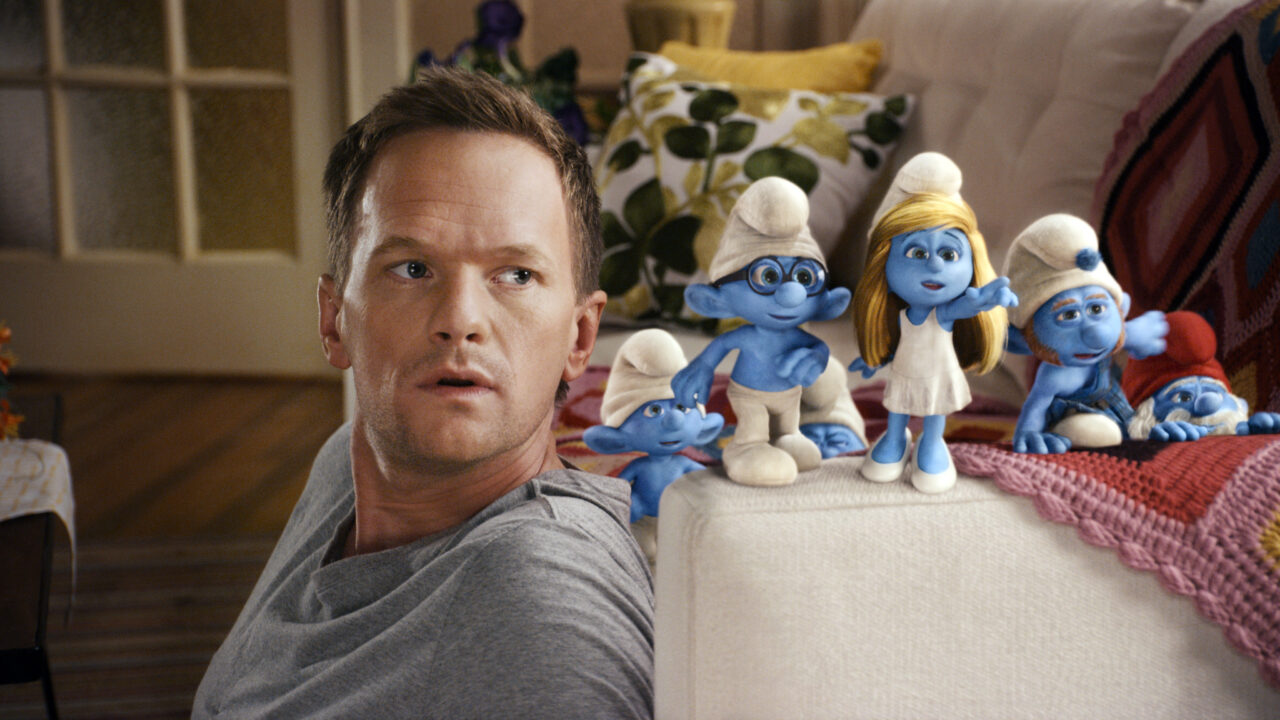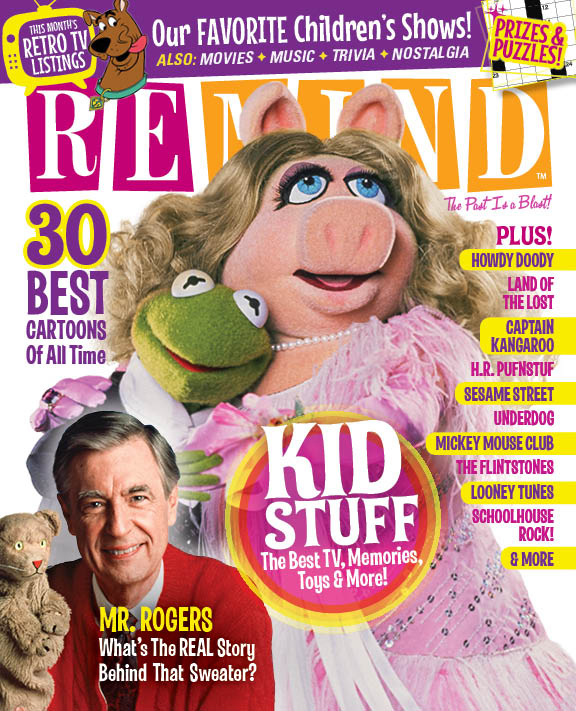‘The Smurfs’ Turn 65 & We Look At Their Lasting Impact on Pop Culture

On October 23, 1958, The Smurfs, originally called Les Schtroumpfs, first appeared in the comic series Johan and Peewit (Johan et Pirlouit) by Belgium cartoonist Peyo. Johan and Peewit — a medieval page and his sidekick — met Papa Smurf and several others from the Smurf village when attempting to recover a magic flute. The fictional colony of small, blue creatures who live in mushroom-shaped houses was such a success that a year later, they had their own comic series.
In this new series, led by Papa Smurf and Smurfette, Smurfs were archetypes of regular people and generally named after their personality traits — for example: Clumsy Smurf, Brainy Smurf and Grouchy Smurf — which was likely modeled after the dwarves in Snow White and the Seven Dwarves. They lived in a village deep in the woods that was nearly impossible to find without a Smurf leading you to it or the use of magic. Perhaps because of its universal themes and depiction of community, the comics grew to such popularity that by 1965, a black-and-white animated film version that included five animated shorts was released in Belgium. In total, ten were made by 1967.
In 1976, the film The Smurfs and the Magic Flute was released in Belgium, The Netherlands and France, where it caught the attention of an American media entrepreneur named Stuart Ross, who would eventually bring the blue creatures across the pond. (Bizarrely, though Ross made millions from this deal, he lost all of it and recently plead guilty to attempted grand larceny, in a Smurfs-worthy plot to extort his own son for millions of dollars.)
The Smurfs reached global popularity in 1981 when Hanna-Barbara Productions began airing a televised version of the series during its Saturday morning cartoon slot. For nearly a decade, with over 200 episodes aired, these tiny blue creatures ruled the morning airwaves. The animated series featured a host of Smurf personalities, including the object of much admiration, Smurfette, the only female in the village and the main protagonist. The wizard Gargamel was the main antagonist and perhaps the most interesting character of the bunch.

© Hanna-Barbera / Courtesy: Everett Collection
With a cat as his only companion, it was no wonder he wanted to destroy the Smurfs (or possibly eat them? Or possibly turn them into gold?). His mother mistreated him because he flunked out of wizard school, and even his godfather Lord Balthazar didn’t seem to like the poor fellow. It didn’t help that he had a rather unlikable personality, or that his extraordinary ambitions were not aligned with his mediocre magic skills and overly complicated schemes, which were often sloppily executed. Either way, he made for an entertaining foil. (But couldn’t he have made more than one female Smurf? Just imagine the amount of cleaning poor Smurfette had to do!)

Columbia Pictures/Courtesy Everett Collection
In 2o11, the series got a reboot and a makeover in the form of a feature film, using CGI instead of 1980s cartoon graphics and starring Neil Patrick Harris, Sofia Vergara and Hank Azaria as Gargamel. This inspired two sequels, The Smurfs 2 (2013) and Smurfs: The Lost Village (2017).
There is also a 2021 Belgian reboot of the series, with a second season airing in November. Looks like these tiny blue creatures are here to stay!

Kid Stuff
June 2018
Unleash your inner child by reliving your favorite kids TV shows, cartoons, toys and more!
Buy This Issue